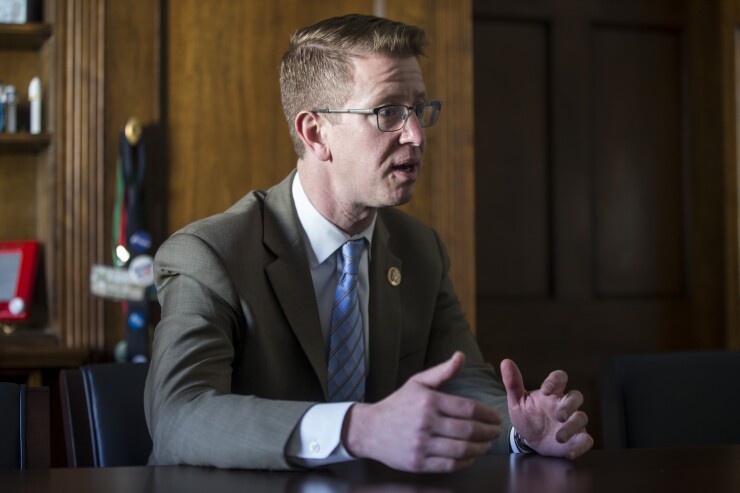Congressional legislation that would expand the use of private activity bonds to include so-called green bonds has been introduced by two House Democrats from Washington state as lawmakers continue to offer proposals for infrastructure investment.
The Preventing Pollution through Partnerships Act or the P3 Act introduced by Rep. Derek Kilmer, D-Wash., and original cosponsor Rep. Denny Heck, earlier this month is the

The legislation would allow state and local governments to issue tax-exempt PABs not subject to state volume caps if at least 95% or more of the net proceeds are used to develop, carry out, or certify approved green infrastructure projects.
Eligible projects would be certified by the state to construct, rehabilitate, maintain, or repair infrastructure that effectively addresses nonpoint source pollution by preserving, enhancing or mimics natural infiltration, evapotranspiration, or capture of storm water.
According to an infrastructure
Kilmer's office said the P3 Act would allow governments to use PABs to finance private-sector development projects that build green infrastructure.
"For example, under this bill, municipal governments could finance a project built with private sector money to retrofit an old strip mall parking lot with permeable pavement that absorbs water rather than letting it flow into the sewer system and ultimately Puget Sound," Kilmer's office said.
Kilmer, who represent the Puget Sound area, said at the time of the introduction of his earlier bill that stormwater is the biggest source of pollution in Puget Sound. "That's why we need to make it easier for communities to invest in green infrastructure for the benefit of all Washingtonians who call Puget Sound home," he said in a press statement.
Kimler linked the economic health of his state and its identity to the future of the orca population and salmon and shellfish industries.
A
The CRS report also said, “The growing interest in green infrastructure practices is driven to a great extent by arguments that it is a cost-effective way to manage urban stormwater problems, particularly compared with costs of gray infrastructure. Cities with combined sewer systems have documented that the use of green infrastructure practices to reduce runoff volume is cost-competitive with conventional stormwater and CSO controls.
"In general, recent examples indicate that properly scaled and sited green infrastructure can deliver equivalent hydrological management of runoff as conventional stormwater infrastructure at comparable or lower costs. It has been estimated that green infrastructure is 5%-30% less costly to construct and about 25% less costly over its life cycle than traditional infrastructure.”
The 2016 CRS report also described examples involving New York City, Cincinnati, Louisville, Chicago, Seattle, Milwaukee and Lancaster, Pennsylvania.
CRS said green infrastructure includes green roofs, downspout disconnection, trees and tree boxes, rain gardens, vegetated swales, pocket wetlands, infiltration planters, vegetated median strips, curb extensions, permeable pavements, reforestation, and protection and enhancement of riparian buffers and floodplains.





